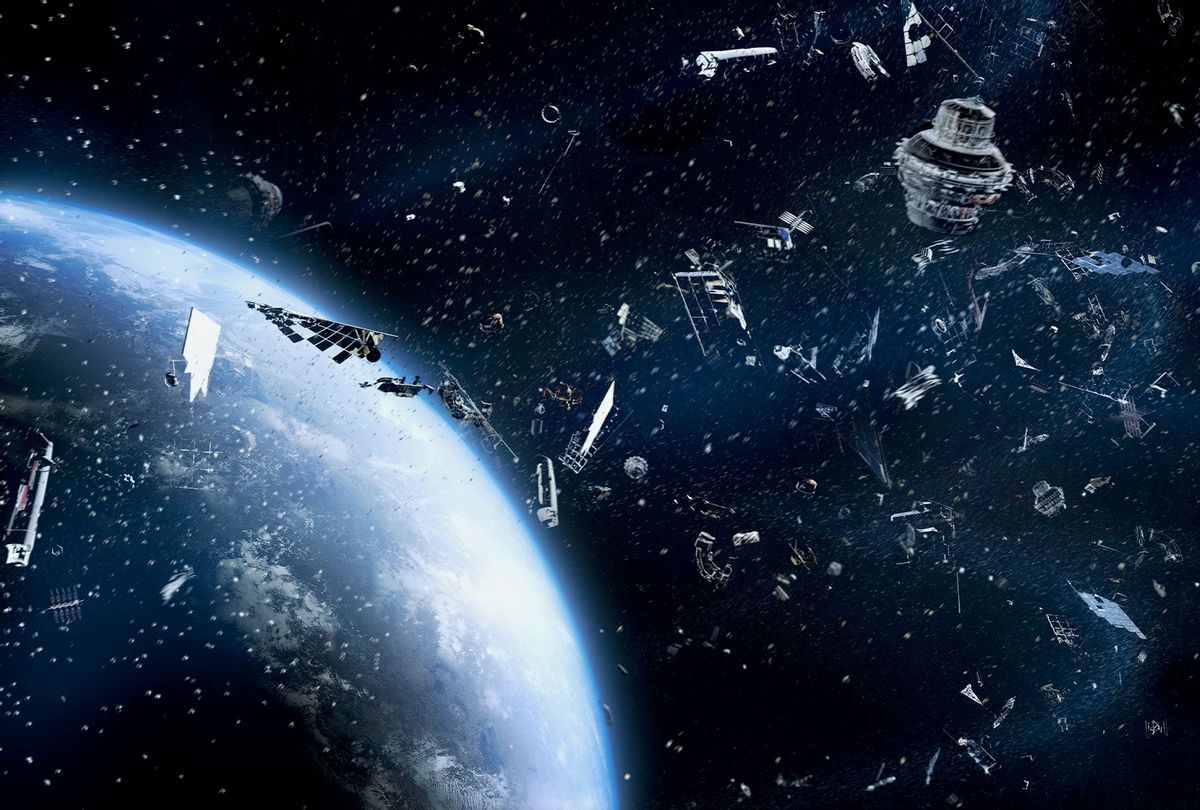28.03.2023
High-powered lasers and special robots that collect junk are among the proposals for cleaning up orbital debris

"We have to learn how to live in our own filthy bathwater at this point."
Dr. Moriba Jah's words were hardly reassuring — but, then again, he was not trying to be. An associate professor at The University of Texas at Austin's Aerospace Engineering and Engineering Mechanics Department, I'd asked Jah what it would take for Earth's skies to be clear again for astronomers. As many stargazers will tell you, there are so many satellites and chunks of man-made debris in orbit around the Earth that it is difficult to observe the wonders of the universe without distraction. Before the Soviet Union launched humanity's first artificial satellite (Sputnik) in 1957, this so-called "space junk" literally did not exist. Now it is so prevalent that Jah bluntly informed Salon the days in which Earth-dwellers could gaze at a pure night sky are forever "over..." "It's like plastics in the ocean," Jah continued. "Just like we'll never have pristine oceans, we'll never have pristine land. It's done."
"We have to learn how to live in our own filthy bathwater at this point."
Despite this bleak prognosis, space agencies believe they can at least improve the situation (even if it's too late to cure it). Hence, NASA released its new report earlier this month on "orbital debris remediation." Like the amateur cosmologists who bemoan polluted skies, the NASA scientists express hope that their future scientific missions will not be compromised by errant debris. Yet the scientists are also concerned about how space debris like discarded equipment, non-functioning satellites, machine fragments and even paint chips can hinder "the use of space upon which critical infrastructure of the U.S. economy relies, such as communications, national security, financial exchanges, transportation and climate monitoring."
As such, NASA's cost-benefit report urges a wide range of methods for cleaning up debris to the greatest extent feasibly possible: Lasers, both ground-based and space-based, that can zap away vast quantities of small debris (anything between 1 and 10 centimeters across); "just-in-time collision avoidance," meaning attaching lasers or rockets to satellites and other important spacecraft to push away debris; and deploying "sweeper" spacecraft that would physically pick up various debris items.
"Cleaning up space debris is not optional," explained associate professor Dr. Carolin Frueh of the School of Aeronautics and Astronautics, who was not involved in the report. Frueh agreed with the authors' conclusion that a multitude of approaches will be necessary to make the best of a bad situation. "It will be a combination of ground-based, space-based including lasers and active removal. First and foremost there has to be the mitigation of debris in the first place and strict end-of-life mechanisms."
Dr. John L. Crassidis, a professor at the Department of Mechanical & Aerospace Engineering at the University at Buffalo, State University of New York, told Salon by email that he agrees with the report that "for small objects, lasers are the most reasonable approach." These small objects can still cause significant damage because they travel at speeds of over 17,000 miles per hour, so "removing these is a good start because the benefit is the fastest of all the ones considered. Ground-based lasers are more feasible at this time."
"There is no 'Lord of the Rings' one technology to rule 'em all. It takes a hybrid approach. It's going to take a little bit of everything."
Unfortunately, despite the consensus view that space junk is a serious problem which urgently needs to be addressed, ongoing developments on Earth continue to make it worse. As just one example, Elon Musk's company SpaceX plans on sending vastly more satellites into orbit even though astronomers already complain that his existing satellites interfere with scientific observations.
"The report does mention 'megaconstellations,' such as the one SpaceX is currently sending up," Crassidis explained. "We don't know the immediate problem, but as the report states 'The number of debris grows even if no new satellites are launched.' Adding thousands of satellites will certainly cause issues. Also, these constellations are causing 'light pollution' for astronomers."
Jah, who told Salon he has been working with SpaceX directly, mentioned that the company has been trying to design less reflective satellites to minimize their impact on astronomy. This could ultimately be a big deal, given that SpaceX owns roughly half of the more than 5,000 operational satellites in orbit right now. Yet Jah added that regardless of possible good faith efforts made by scientists, "The fact [is] that these things do pollute the night sky, man, in terms of observations for astronomy and that sort of stuff, and even in rural areas [where there are] indigenous people whose cultural heritage is to look at the sky."
While these developments are troubling enough, there is no reason to believe that the situation could not get even worse. When asked about the worst-case scenario if the space debris problem goes unaddressed, Cassidis drew attention to "Kessler Syndrome," or a scenario in which satellites or space junk collide, generating ever more space junk, in an escalating cycle that soon becomes unmanageable. Picture a satellite collision creating debris, then that debris knocking into other debris, which creates even more debris that collides with (and thereby further creates) even more debris, and so on. Such an event could ultimately kill astronauts on space stations, knock out communications and transportation infrastructures, and wreak all kinds of unforeseeable havoc.
"Some say we're already getting close," Cassidis concluded. This is why scientists, despite the daunting nature of trying to clean up all of this space junk, ultimately realize that they have no choice but to try.
"There is no 'Lord of the Rings' one technology to rule 'em all," Jah stated. "It takes a hybrid approach. I tend to like hybrid approaches to things. It's going to take a little bit of everything."
Quelle: Salon.com
